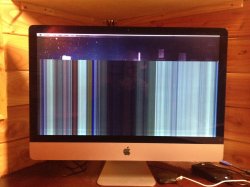It's not just the casing. I'm not talking about bodywork. The panel is not what makes a great monitor great.
The analogy failed on you because like assuming the panel is the monitor, you're assuming the engine is the car, neglecting the chassis, transmission, suspension, and all the other pieces. Two cars sharing the same engine can be very different in characteristics, including price.
That is literally their business model. This is my industry. Production capacity is reserved for major OEMs, who reserve all A-grade capacity at the factory. B-grade panels are then sold at a much lower price to these off-brand manufacturers, and they manually bin them to pick out the ones that are good. That's why you see them consistently offer their "standard" and their "pixel perfect" versions of the same product when your more mainstream brand wouldn't be able to differentiate in their production process.
There's a huge sample bias in your assertion.
Tear one down. Not only will you see it visually, but you can compare the parts for yourself. You do get what you pay for.
Like I said, you may be happy with something that's 80% as good for 50% of the price, but that is not remotely the equivalent to: "it's the same panel so it's just as good".
Only if you don't understand how the display industry works, like this:
Clearly you're the professional, hiding behind whatever username yours means.
I understand the A grade and B grade panels, but often there's VERY little to differentiate between them. And yes, I've compared, - admittedly a small sample, but it's at least a comparison. You still quote all these issues and problems with absolutely no sources to back them up. I'm a journalist. That's my field. Cite your sources.
If the iMac panels, Dell panels, Asus panels etc were flawless panels each and every time, we'd be having a different discussion. But given my experience with the Catleaps, QNIX etc etc, and having recommended them to a BUNCH of people, - honestly, those "second rate," "crappy," "poorly manufactured" displays are more consistent than any iMac panel I've used, and I've used quite a few.
And say, for argument's sake, you're right. The quality on them is crappy blah blah, and they might die after 6 months. Well, spend a little bit extra on a Squaretrade warranty, and Bob's your Uncle. The cost saving is far, far too hard to ignore.


